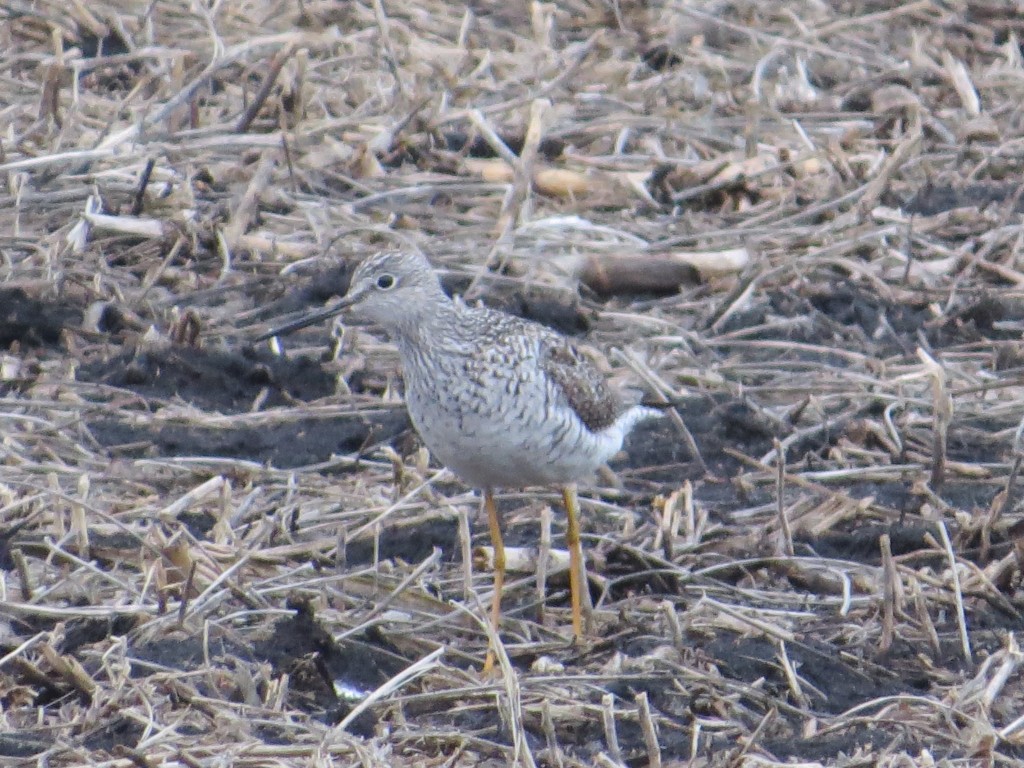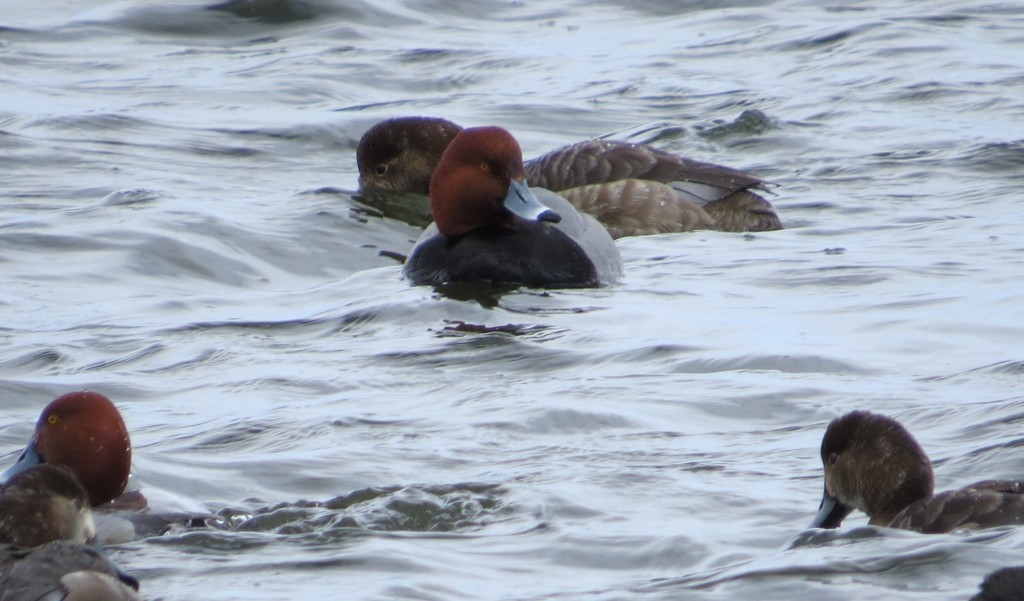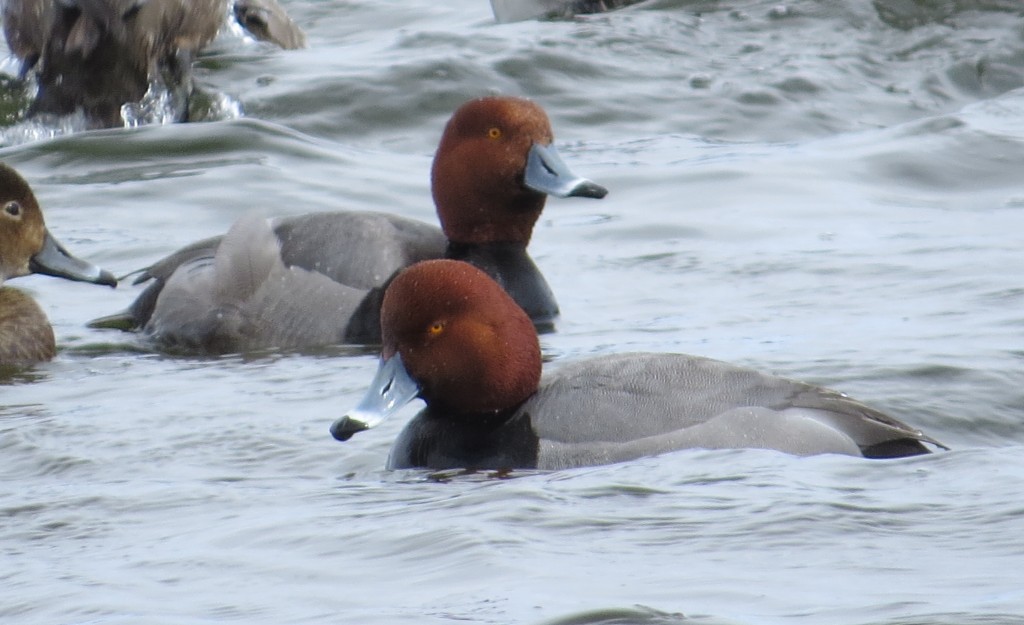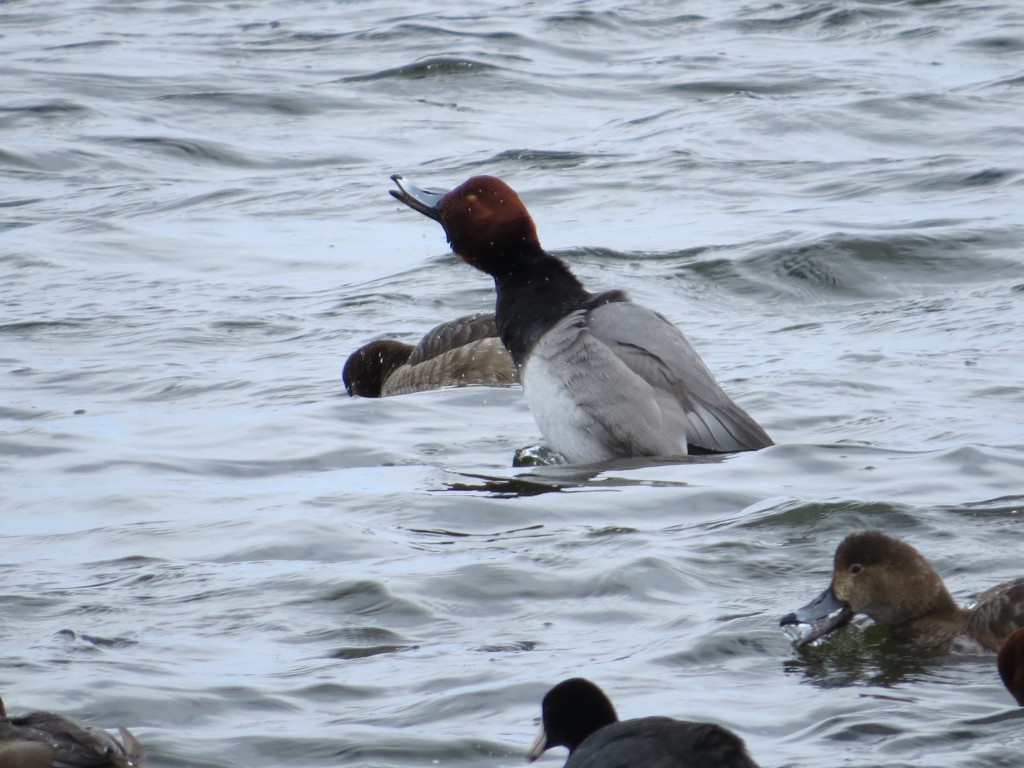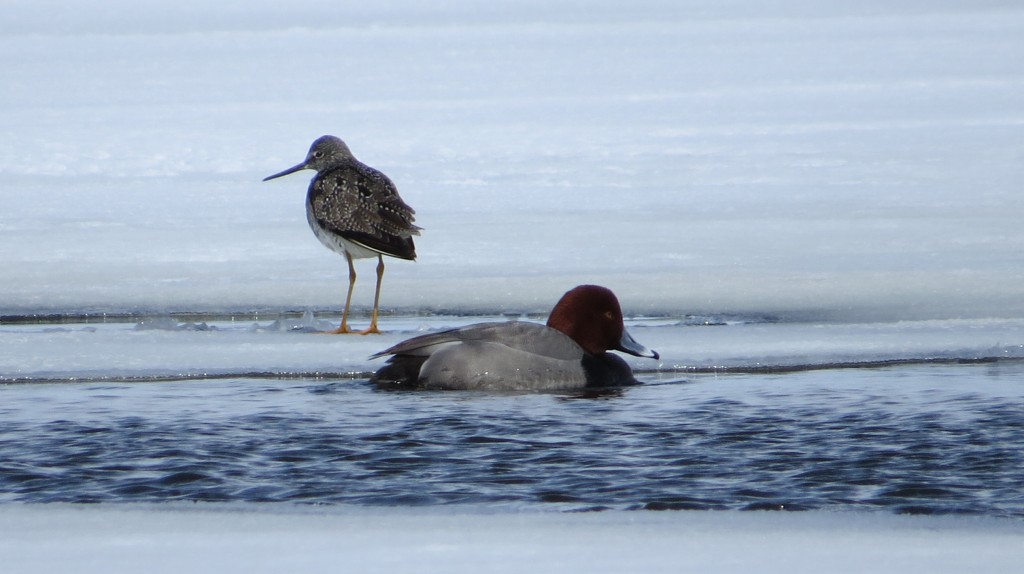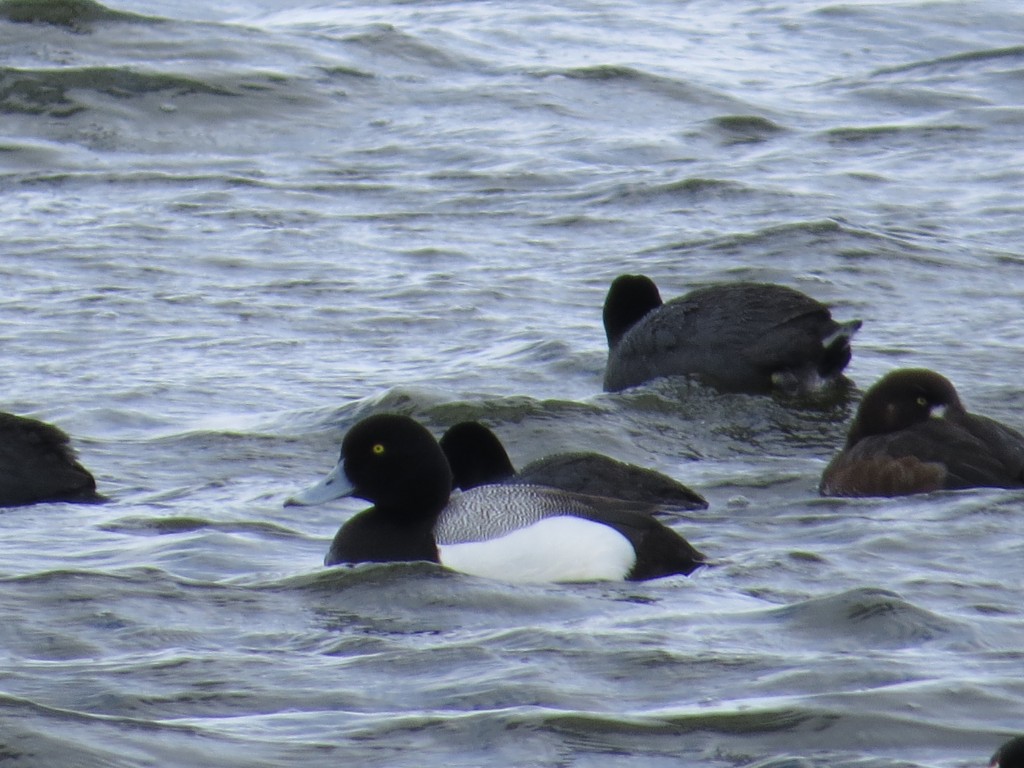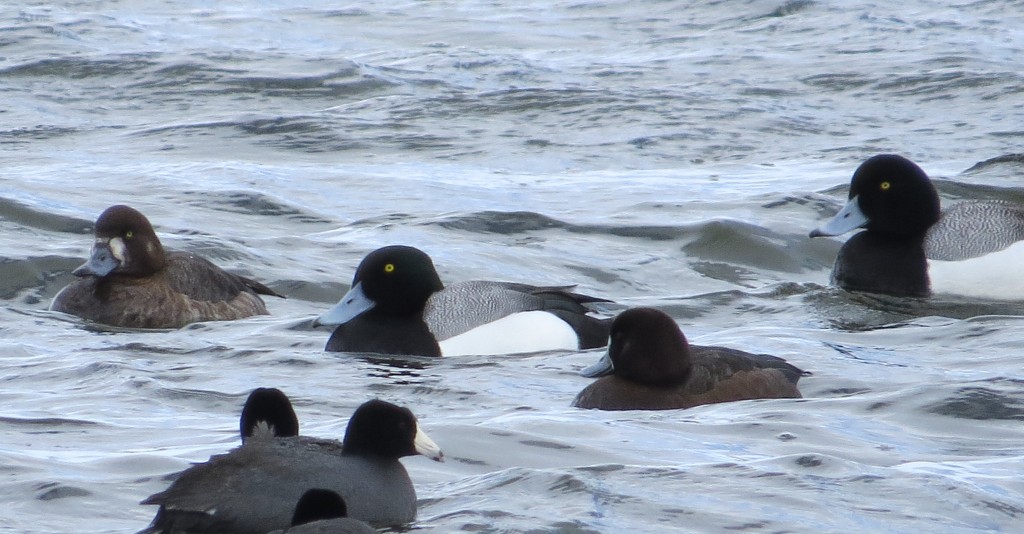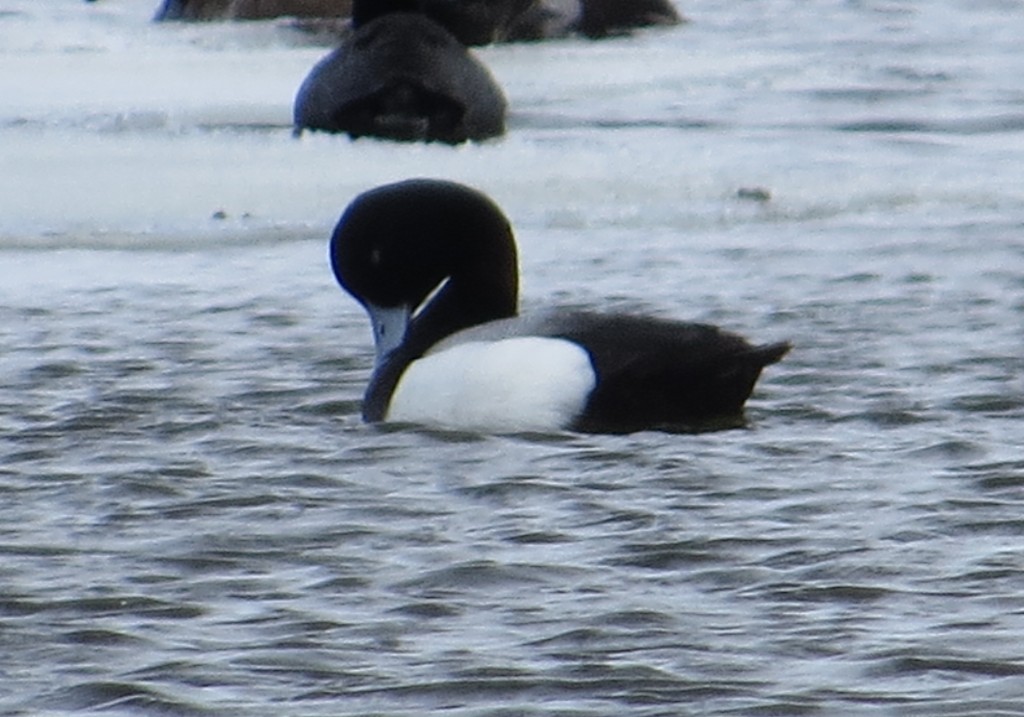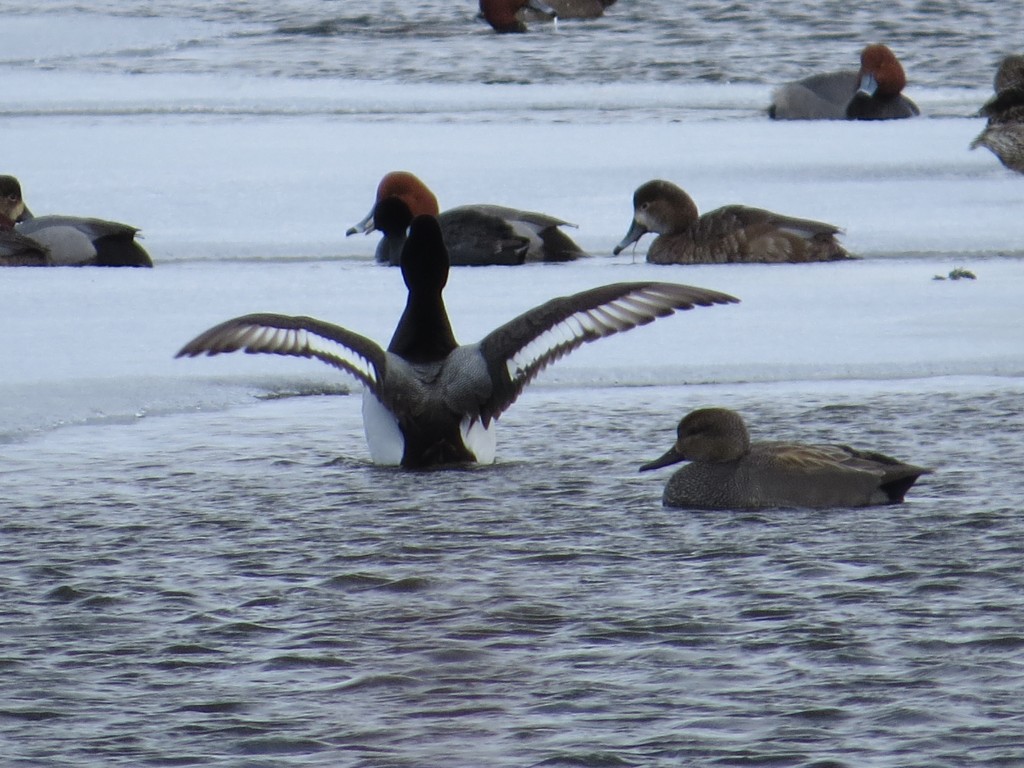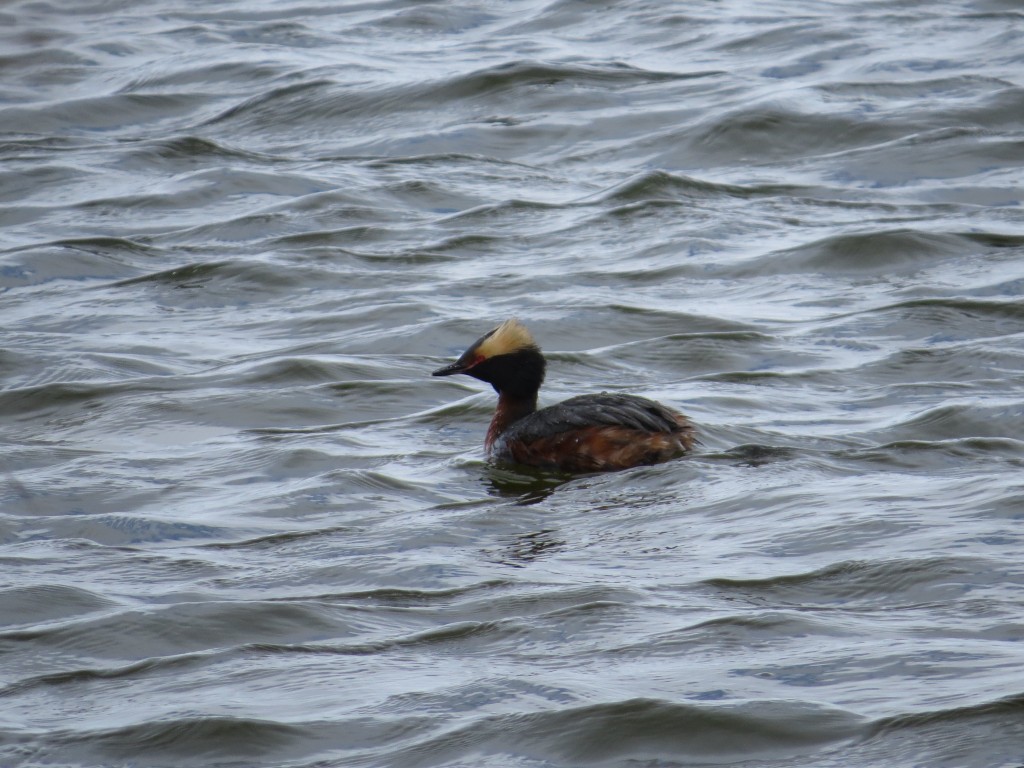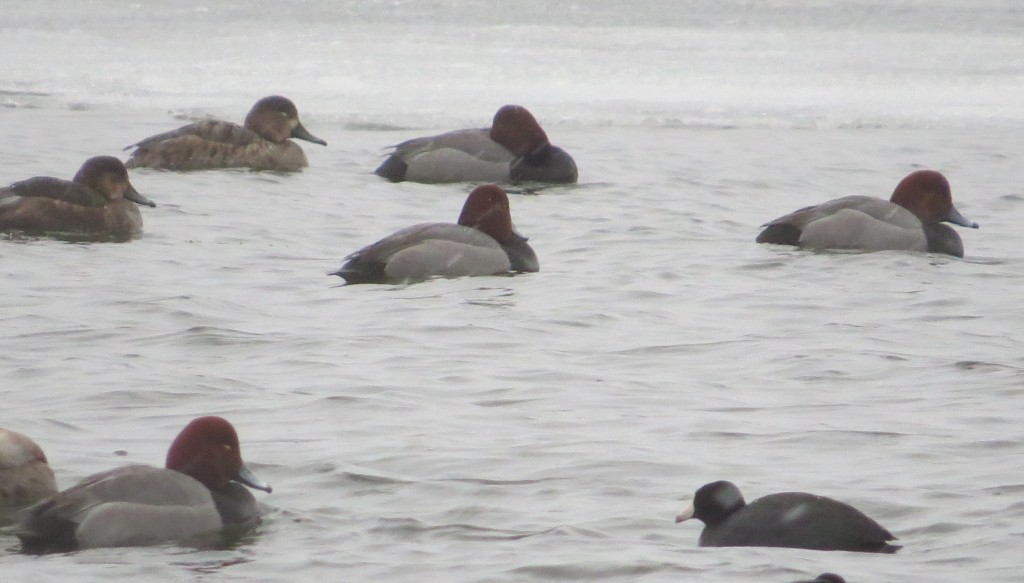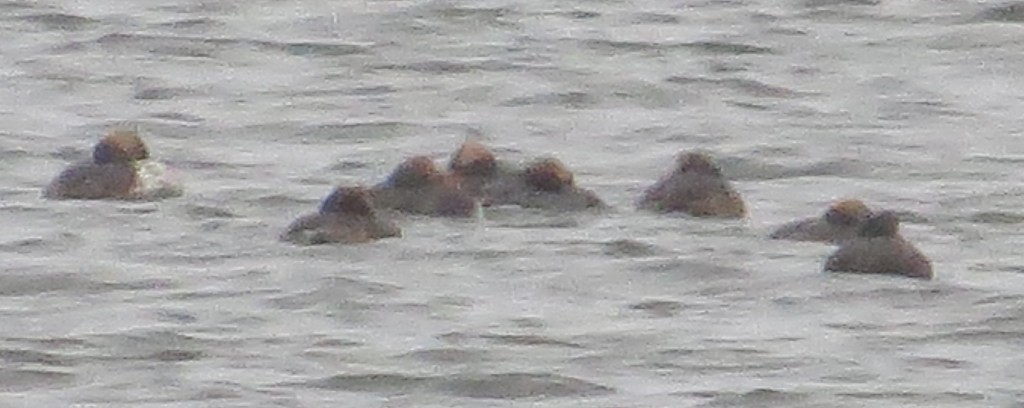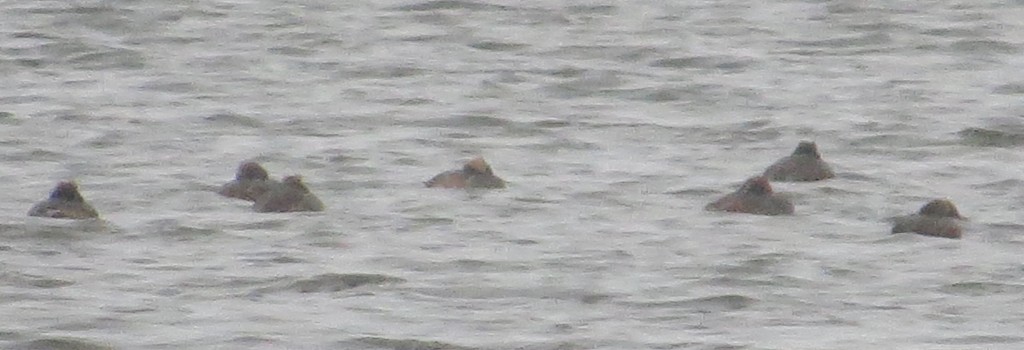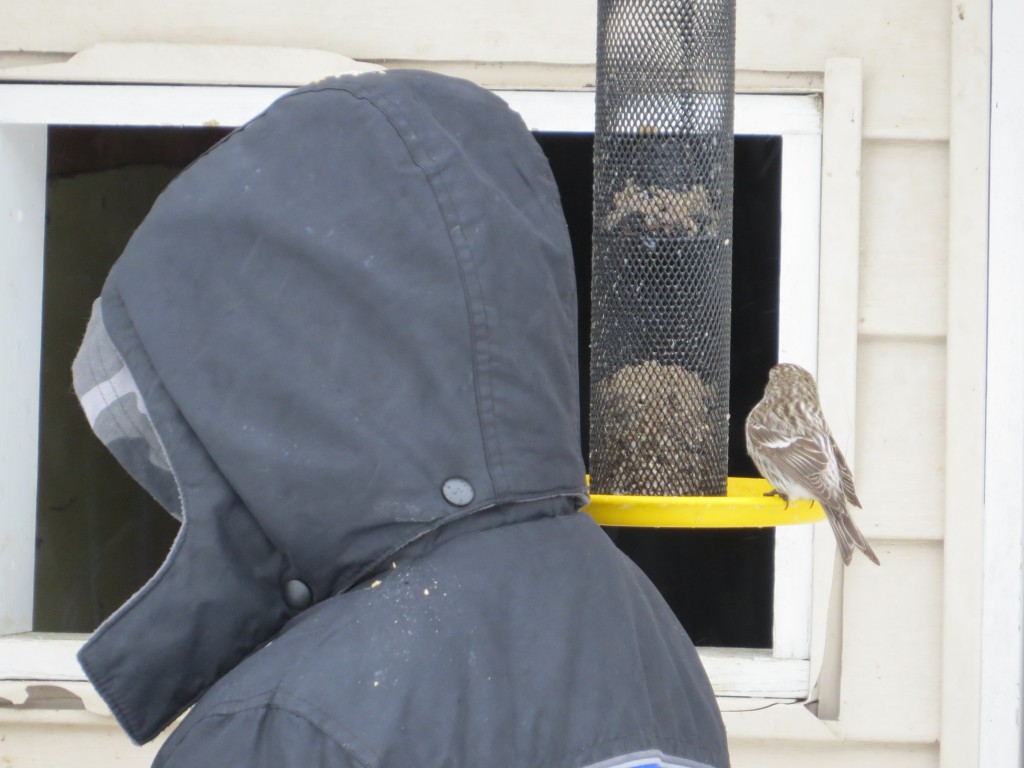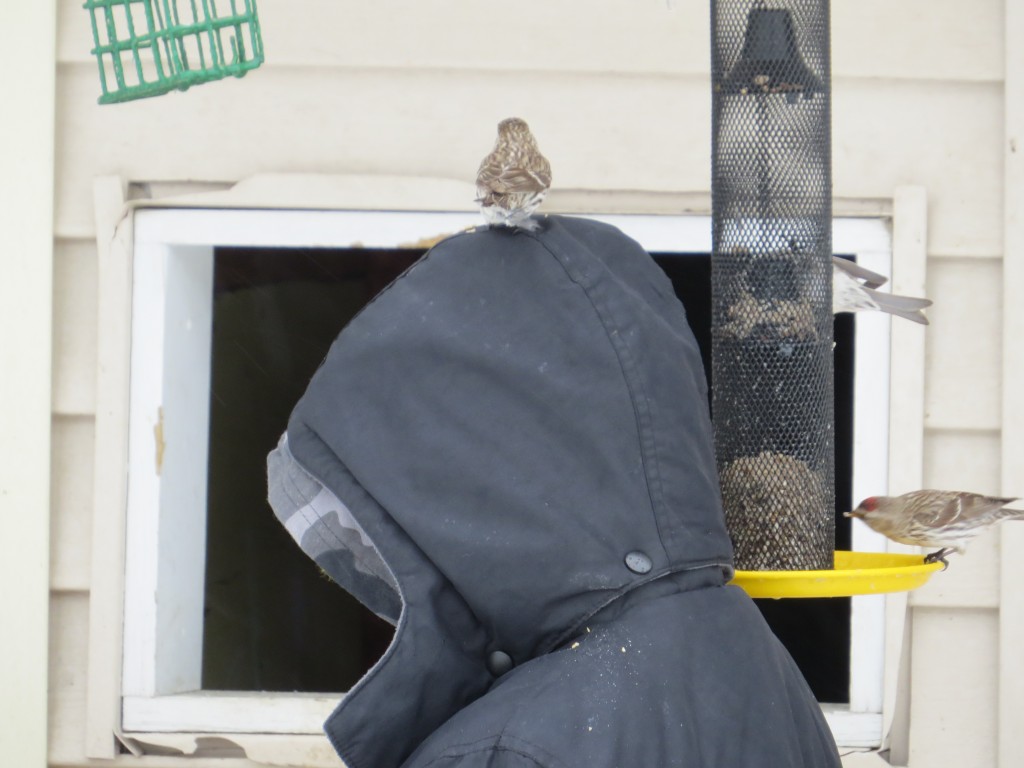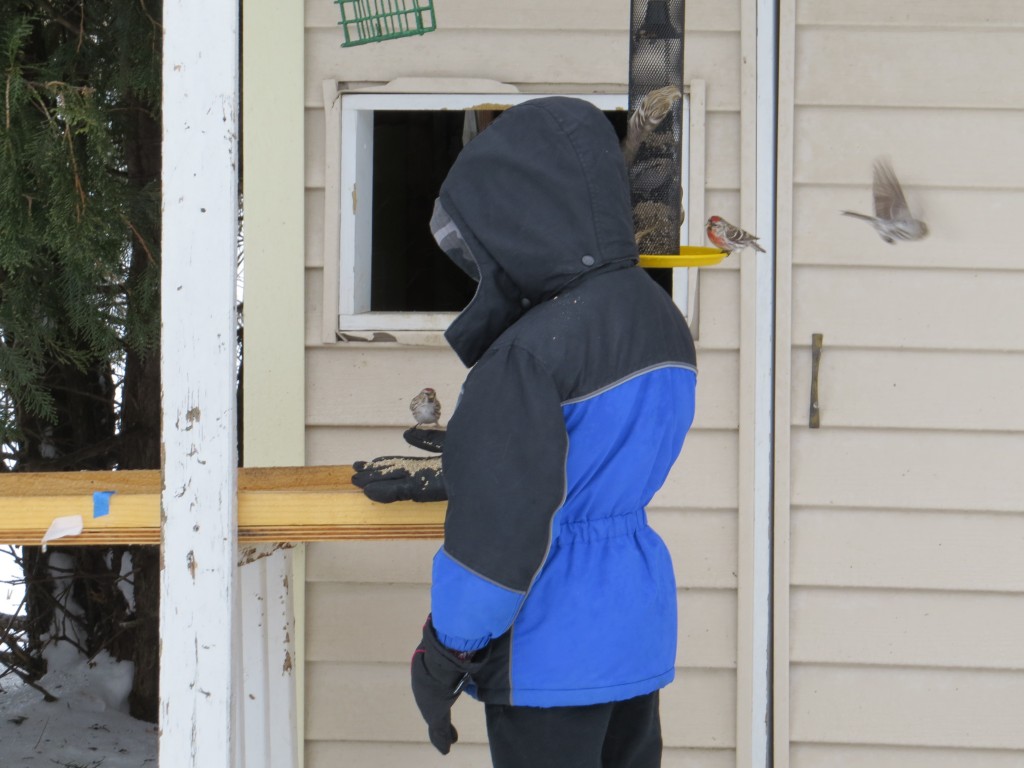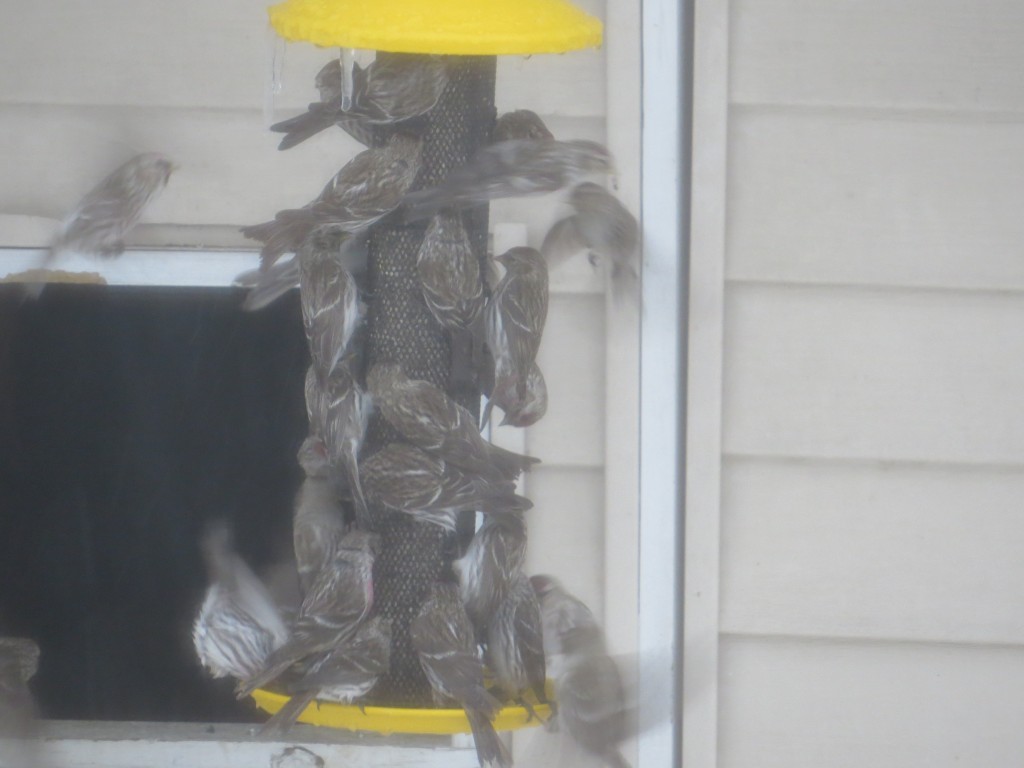Author Archives: Josh
Hermit Thrush
A Delightful Dinner
Our daycare provider decided to take a week-long vacation, so that meant we called for reinforcements – Grandma and Grandpa. The kids have been anxiously awaiting their arrival for days. In fact, we knew about when they would pull in the driveway tonight, so Evan and Marin watched out the window for a good ten minutes. As the familiar van rolled down our street, there were two sets of legs jumping up and down on my couch.
My parents came just as we were trying to sit down to eat. After we finally got the kids back to the table and settled down, we finished supper and let the kids excitedly show and tell their grandparents about anything and everything that’s been happening in their lives. Grandpa had a surprise for Evan – a huge bird book from his college days that has beautifully and correctly painted images of all the birds. It was pretty cool.
Then it dawned on me – we still had over an hour until dark and Evan’s bedtime. I asked Evan and Dad if they wanted to go out for a little drive. It didn’t take much to convince them. Within minutes we were on a gravel road just seeing what we could see. We saw a lot of regulars, but one bird held our attention for quite awhile. We came across this Pied-billed Grebe working so hard to eat this enormous Leopard Frog. It was quite a scene! We never did see if it got it down.
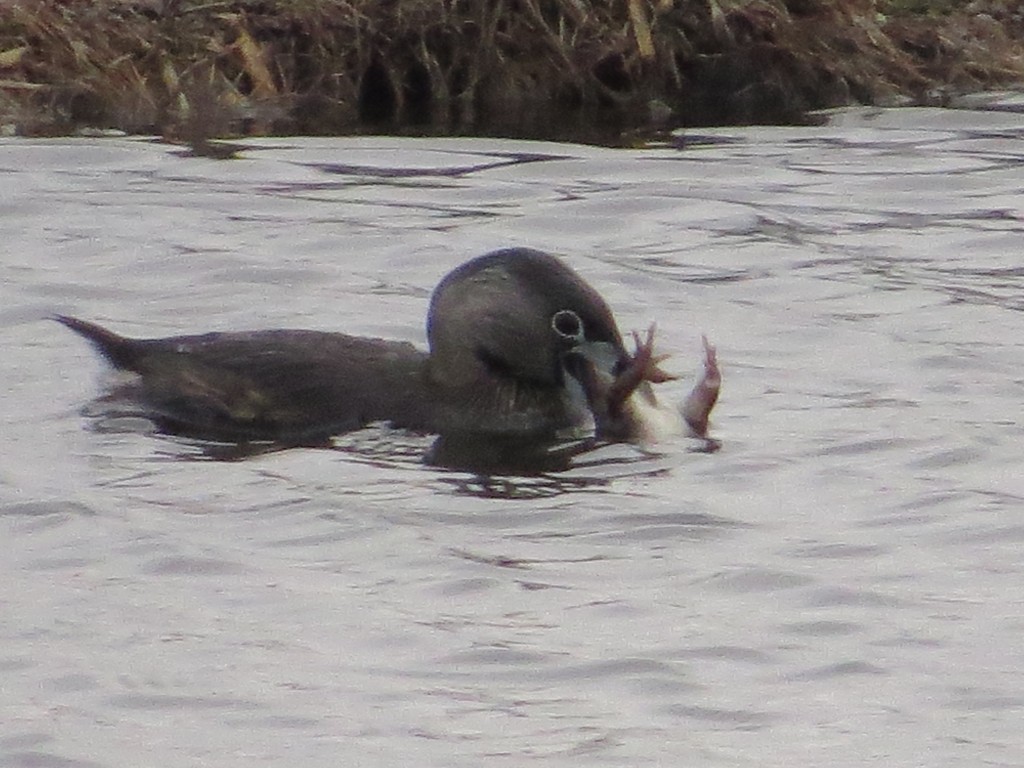
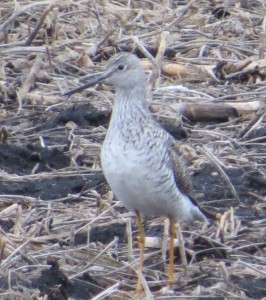 As we traveled out toward our familiar field lake, which dried up about a week ago, we stopped to look at a little puddle in a field because there was a pair of mallards on it. Then we saw that there was a shore bird. Evan and I are new to the whole shorebird branch of birds, so we have no idea what we are looking at most of the time. However, I did recognize this to be a Yellowlegs, but there are two Yellowlegs – the Lesser and Greater. Basically the only difference between them is about 4 inches in size. It’s easy to tell the difference when they are next to each other. When they are isolated, it is almost impossible to tell size. We were able to determine from the photos that this bird had a slight upward turn in the bill – a field mark of a Greater Yellowlegs. This was good news. The Greater Yellowlegs was a life bird that I got by myself when I photographed waterfowl the other day. Evan was crushed when I got a new one that he didn’t.
As we traveled out toward our familiar field lake, which dried up about a week ago, we stopped to look at a little puddle in a field because there was a pair of mallards on it. Then we saw that there was a shore bird. Evan and I are new to the whole shorebird branch of birds, so we have no idea what we are looking at most of the time. However, I did recognize this to be a Yellowlegs, but there are two Yellowlegs – the Lesser and Greater. Basically the only difference between them is about 4 inches in size. It’s easy to tell the difference when they are next to each other. When they are isolated, it is almost impossible to tell size. We were able to determine from the photos that this bird had a slight upward turn in the bill – a field mark of a Greater Yellowlegs. This was good news. The Greater Yellowlegs was a life bird that I got by myself when I photographed waterfowl the other day. Evan was crushed when I got a new one that he didn’t.
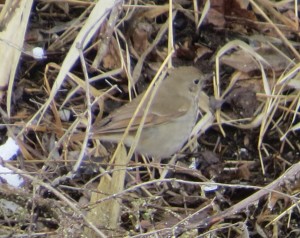
The other life bird I got the other day was the Hermit Thrush. Yesterday Evan went with me to scout my turkey hunting spot, and he picked up the Hermit Thrush (several times) as we walked around. Whew! He was all caught up to me. Another bonus of yesterday’s outing was that he got to see the American Woodcock and add it to his life list. I already had that one, so now the difference between our life numbers continues to shrink. I wouldn’t have it any other way.
Waterfowl Photo Shoot
Melissa was supposed to take today off to watch Marin because our daycare provider is on vacation. The recent blizzard upended that plan this morning. My school ended up closing, and Melissa’s school was late, so we flip-flopped. I stayed home to watch Marin, and Melissa went to work.
I dropped Melissa and Evan off at their schools, and then I wanted to stop by Foot Lake since the sun was out. It turned out to be a beautiful day! I was hoping to catch the Redheads in good light. Marin gets tired of “bird hunting,” so I wasn’t going to stay long. However, she fell asleep in the car and was in need of a nap. I decided to just watch the activity on the lake while she took a 1.5 hour nap. Here is what I captured today:
I spent most of my time photographing the Greater Scaup because it is so hard to find. I captured a lot of the key field marks that distinguish it from the Lesser Scaup. Here you can see the rounded head with a greenish tint. The Lesser is more pointy toward the back and is tinted purple. The Greater also has a brighter white look.
Seeing these brings back fond memories of spending time with my dad. Each spring we would search the shores after ice-out for “bluebill” decoys that had broken free from their anchors the previous fall. Lesser Scaup and Greater Scaup are commonly known as “bluebills” by duck hunters. Do you see why? Scaup hunters typically hunt in the windiest, nastiest weather and set out hundreds of decoys to attract the large rafts of these birds into range. Therefore it is not uncommon for the decoys to break free. We picked up dozens over the years. Each was a treasure. I got rid of many of these, but I still have a dozen. No, I probably won’t hunt with them. They are just a keepsake of some fun times with dad.
This next photo was my favorite of the Greater Scaup because it captured a “hidden” field mark – the extension of white on the wings. The Lesser Scaup does not have this amount of white.
It was also nice to get a cleaner shot of one of the life birds from the other day – the Horned Grebe.
As I photographed birds, the female Northern Harrier was hunting the American Coots! It didn’t have success, but it was fun to watch anyhow.
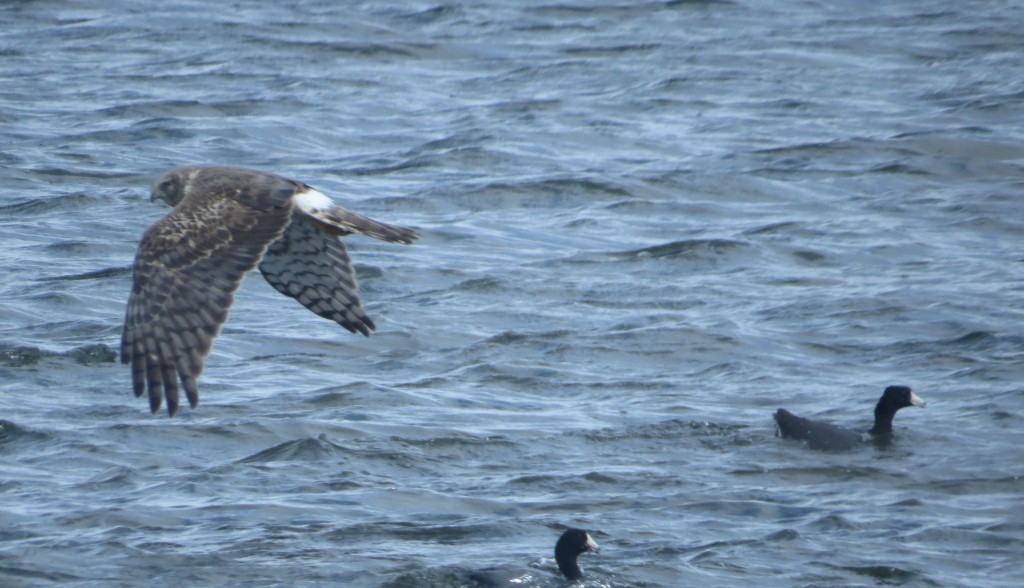 And, I can’t resist the Wood Ducks.
And, I can’t resist the Wood Ducks.
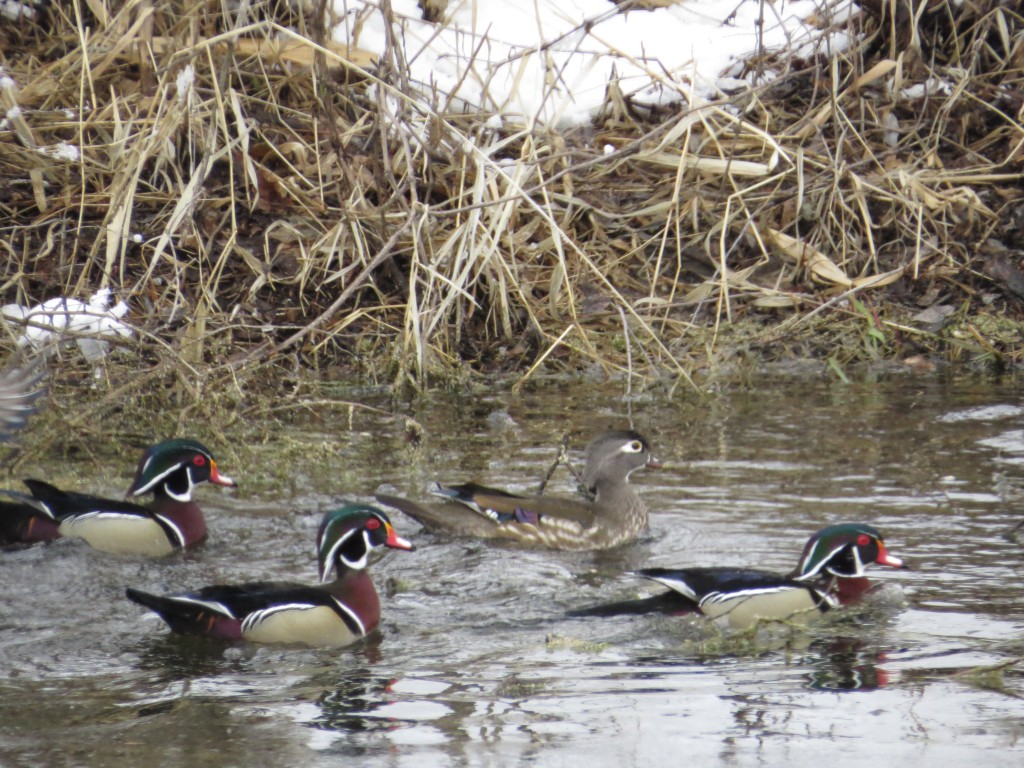 I picked up two life birds for myself today quite by accident. Finding new birds without Evan isn’t any fun. That feeling was only compounded when he was in tears that I told him I got a couple new ones. So, I won’t say what they are. One is located in these pictures. I can’t wait for migration to get into full-swing so we can hunt the lifers together.
I picked up two life birds for myself today quite by accident. Finding new birds without Evan isn’t any fun. That feeling was only compounded when he was in tears that I told him I got a couple new ones. So, I won’t say what they are. One is located in these pictures. I can’t wait for migration to get into full-swing so we can hunt the lifers together.
Eared Grebe
Horned Grebe
Greater Scaup
Bacon Before Birds
Like volunteer firemen, sometimes we birders never know when the next call will come. I was in the midst of frying bacon tonight for our BLTs when I saw I had a missed call from Steve and two text messages from him: “Grebes on Foot Lake.” “Greater Scaup as well.” Greater Scaup! We still needed some species of grebes, but it was the Greater Scaup that really got me excited. It is one of our last ducks to add to our life lists. Apparently they are not easy to get, and it can be tough to make a positive ID when they are around because of the look-alike, but smaller Lesser Scaup. After I texted him back asking for more information, Steve called me. It turns out his information was second-hand from a well-respected birder in our county, Ron Erpelding. If Ron said there were Greater Scaup, then there were Greater Scaup. (I ran into Ron a couple weeks back at the lake, and he kindly introduced himself and pointed out the American Wigeon I photographed.) Steve said Ron saw both Horned and Eared Grebes – two birds that needed to get checked off our life lists as well. If the Greater Scaup and two more life birds weren’t enough to get us moving quicker, Steve added that he had never seen the Eared Grebe before. He was on his way to check it out. I told Evan everything I had just learned, to which he replied with a rising voice, “Are we going?!”
As badly as I wanted to take off, I couldn’t abandon the bacon. That’s just wrong. Actually I wanted to make sure we ate together before we flew out of the house. So I finished up my frying duties, we assembled our sandwiches, we wolfed them down, and then we scrambled for the exit. I gave Steve a call en route – he found all three species. Excellent. The weather was rapidly deteriorating on our way to the lake as the next April blizzard approaches. Yes, I did just combine the words “next” “April” and “blizzard” in the same sentence. Hopefully we would be able to make some positive IDs in this fat rain/snow.
We got to Foot Lake and saw that the hole in the ice had grown a lot. I guess it had been awhile since we were last there. The front ice was loaded with birds. It was mostly American Coots and Redheads. If I weren’t trying to find the three new life birds, I would have spent more time photographing these Redheads. They were gorgeous.
I finally located a large raft of duck-like birds in the center of the water. The combination of falling snow/rain and the distance made for a difficult time identifying or photographing. Not only that, but these birds had their heads down sleeping. I knew they were not any of our duck species and that they had to be the grebes we were after. As I said before, I’m not up on my grebe knowledge, so I took a bunch of pictures to bring back and examine on the computer. Using a camera for identification has been nice. Evan loves to look at the images on the big screen with me and discuss the field marks and offer his opinions. We believe this first image shows the Horned Grebe.
Then on the very right side of this next picture, we think we caught proof of the Eared Grebe.
After taking a couple warm-up breaks in the car and rechecking all the birds on the water, I finally found the small group of Scaup. I did my best to wait to take a picture until these ducks were next to other species of known size like the Canvasback and the Redheads. Based on the size comparison, the brighter white, and Ron and Steve’s reports, we are convinced that we found the Greater Scaup! It was now a three-life bird night! There are two Greater Scaup males in the center of the back row of ducks – look for the black, white, and gray ducks.
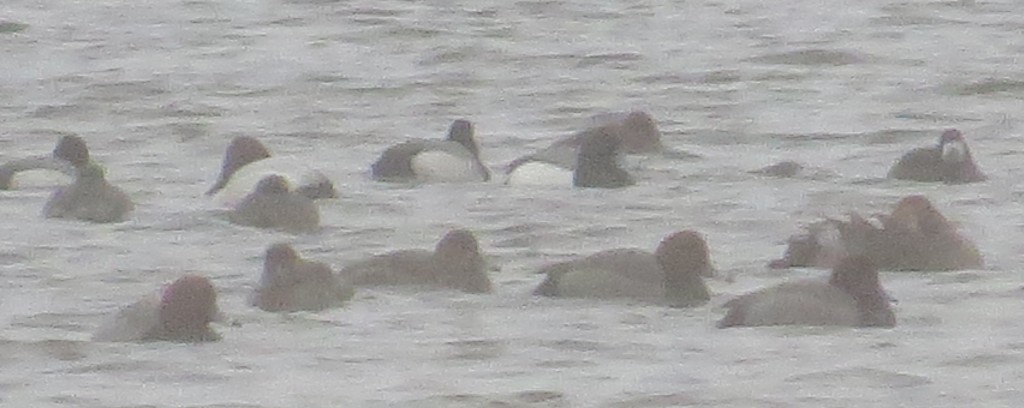 I never thought we’d be going after waterfowl tonight. Birding is full of spontaneity and surprises. I can’t wait for the next “Go time.” Thanks for the tip, Steve!
I never thought we’d be going after waterfowl tonight. Birding is full of spontaneity and surprises. I can’t wait for the next “Go time.” Thanks for the tip, Steve!
Bad Scarecrows
This morning I saw that the redpolls were abundant and ferocious. I still couldn’t believe I fed one by hand the day before, and I was itching to repeat the experience. I thought it would be fun to make a video of my second attempt at feeding redpolls by hand. Melissa was still asleep, so I set the camera on top of the grill to record myself. You have to see this to believe it. The video tells the story much better than words could ever do. Be patient with the first 45 seconds or so. It gets really good, trust me.
This afternoon I asked Evan if he wanted to try feeding the birds by hand. Of course he was interested. Silly me for asking. I gave him a tutorial in the house about how to do it and stressed the importance of not flinching or reacting. I loaded him up with seed, put him in position, and got out of the way to watch. He was perfectly still even as no birds came for the longest time. I was proud of how well he did. Then, finally, a redpoll came in close. Once one tries out the new “feeder,” the others quickly come in.
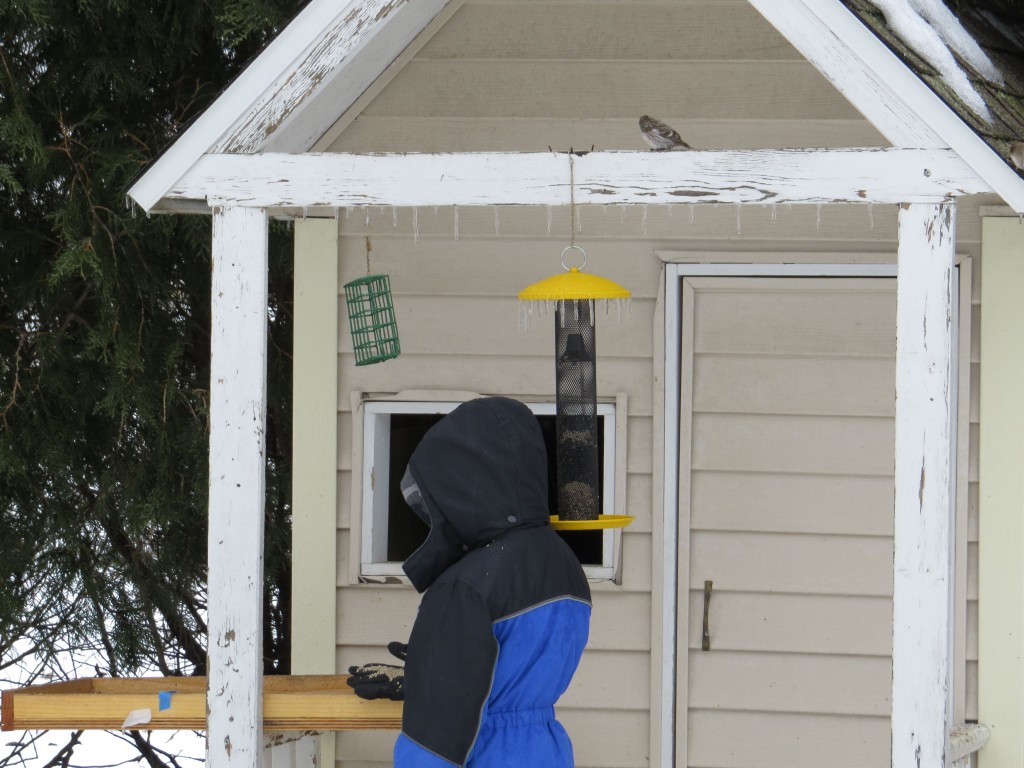 They were right by his head! I saw his body wiggle as if he were giggling at this sensational experience.
They were right by his head! I saw his body wiggle as if he were giggling at this sensational experience.
Then he had a bird eating seed off his hood! It stayed for a long time.
Finally, one landed on his hand! I could only imagine what Evan was thinking at that moment while he watched a wild bird in his own hand.
After awhile, I figured he had to be cold and tired of standing still, so I broke the silence and asked if he wanted to be done. The birds scattered at the sound of my voice. He responded with a disgusted, “No!” Since he wanted to keep at it, I decided to join him. We could not pull the redpolls back in. After a few minutes we decided too try the front yard. The feeder is 6 feet off the ground, and so I was the only one able to reach my hand up there. Evan just held his in the sky. Eventually one redpoll landed on my hand. Time to experiment. I wanted to transfer the bird to Evan’s hand. After slowly bringing my hand down to his and tilting it ever so carefully, I was able to get the bird to hop on to Evan’s hand. Then I reached up to try to get another bird while Evan’s bird gorged itself on seeds on his hand. It stayed for a long time. I never did get another one to land on my hand, but it didn’t matter. I was happy for Evan that he got to experience this magic.
Later in the day I made a trip to town to pick up more bird food as the redpolls have been emptying my thistle feeders in just a day in this awful weather. While at the store I ran into Steve in the bird-feeding section. Go figure. He said he was going to try hand-feeding the redpolls. I gave him some pointers and then we parted company. It couldn’t have been much more than an hour later that I got a text from him saying he had success.
So, if you have redpolls and want to try this, here are my tips:
-Wear a hood to conceal your human form. Wear gloves to keep your hands warm.
-Look down and don’t stare at a bird if it comes close. Watch it out of your peripheral vision. This is the critical time. Stay as motionless as possible. Once a bird comes in to feed, it breaks the ice for the others.
-Hold your hand full of food at the base of the feeder. This gives a rest for your hand and brings the new food source close to the old. If a bird lands on the feeder above your hand, slowly move your hand up to the bird. When you touch the bird, it should just step or hop onto your hand.
-Once the bird is comfortable, you can begin moving your hand (and the bird) around and look at the bird all you want.
-To gain the maximum effect, put bird food on your head, shoulders, arms, or wherever it will stay.
-Have fun!

